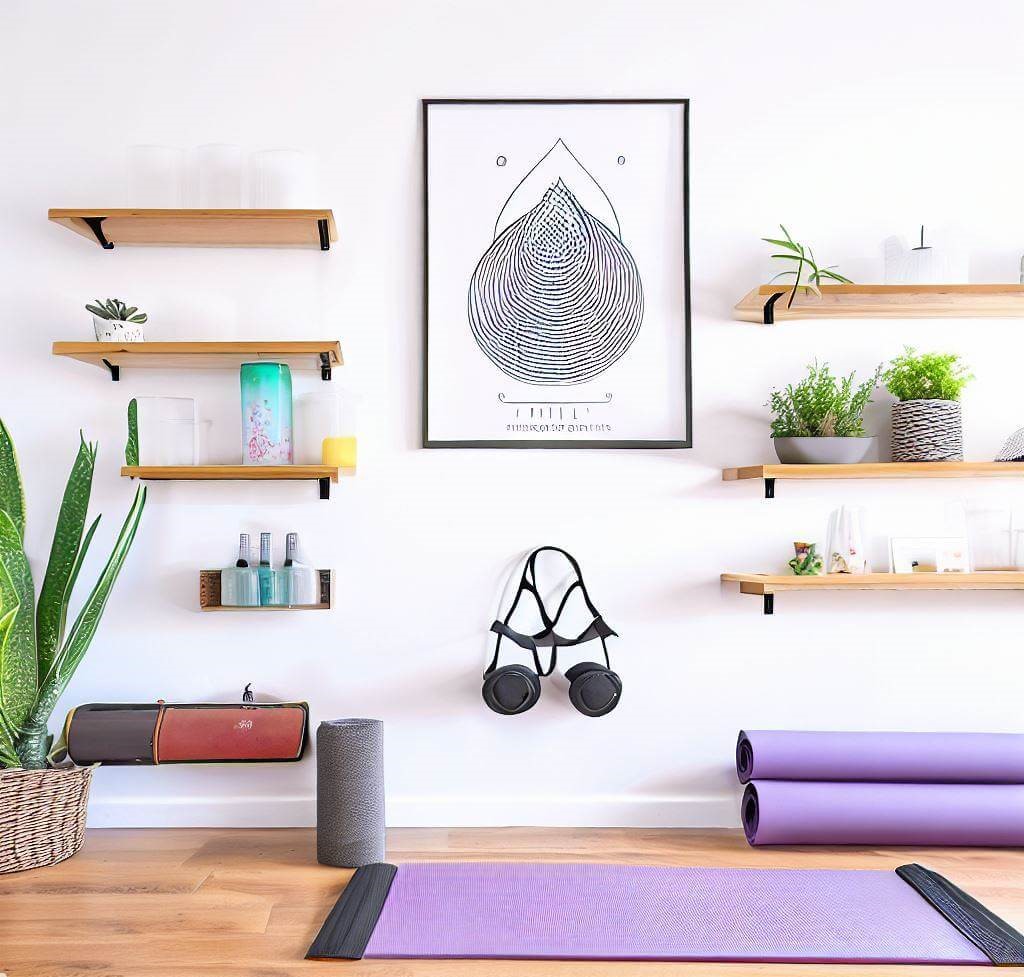Introduction
An increasing number of people around the globe are facing the challenge of diabetes, a chronic disease characterized by high blood sugar levels. The good news is, managing diabetes and maintaining a healthy lifestyle is within reach, with the right tools at hand. One such tool is yoga – an ancient practice that can significantly improve your health if you’re living with diabetes. In this article, we’ll explore the beneficial relationship between yoga and diabetes and introduce five yoga poses that can help improve your health.
Understanding Diabetes
Diabetes is a health condition where the body either doesn’t produce enough insulin or can’t effectively use the insulin it produces, leading to elevated blood sugar levels. There are two main types of diabetes – type 1, which is usually diagnosed in childhood and requires insulin injections, and type 2, which typically develops later in life and can often be managed with lifestyle changes and medication.
The Importance of Physical Activity for Diabetics
Physical activity plays a vital role in managing diabetes. It aids in maintaining a healthy weight, reducing blood pressure, strengthening the heart, and improving blood circulation. Furthermore, exercise helps the body to use insulin more efficiently, leading to lower and more stable blood sugar levels. This is where yoga comes in.
The Link Between Yoga and Diabetes
Yoga is a low-impact exercise that combines physical postures, breathing exercises, and meditation. Research suggests that regular yoga practice can help reduce blood sugar levels, improve insulin sensitivity, and relieve stress – a significant factor in blood sugar management. With its emphasis on relaxation and mindfulness, yoga can also assist in managing the emotional challenges that often accompany a diabetes diagnosis.

Yoga Pose 1 – Child’s Pose (Balasana)
Description: Child’s pose is a restful pose usually performed to relax the body between more challenging poses.
Benefits: Child’s pose helps to stretch the hips, thighs, and ankles. It reduces stress and fatigue and can aid in relieving back and neck pain. For diabetics, this pose can help to calm the body and mind, aiding in stress management.
Drawbacks: This pose might be challenging for people with knee injuries or hip problems.
Yoga Pose 2 – Legs-Up-The-Wall Pose (Viparita Karani)
Description: This pose involves lying on your back and resting your legs against a wall. It is often done with a bolster or folded blanket under the lower back for support.
Benefits: Viparita Karani can help reduce stress and anxiety, which are often linked to higher blood glucose levels in diabetics. The pose also improves circulation and can provide relief from minor back and neck pains.
Drawbacks: This pose may be difficult for those with severe back issues or glaucoma, due to the increased pressure in the head and eyes.
Yoga Pose 3 – Tree Pose (Vrikshasana)
Description: Tree pose is a standing pose that involves balancing on one leg and placing the other foot on the supporting leg, at the calf or thigh level.
Benefits: Apart from enhancing balance and stability, tree pose can strengthen the legs and core, areas crucial for overall mobility and stability. It also promotes body awareness, which can help in maintaining a healthier lifestyle.
Drawbacks: Individuals with balance issues may find this pose challenging. However, you can modify it by resting your back against a wall for support.

Yoga Pose 4 – Bridge Pose (Setu Bandhasana)
Description: In this pose, you lie on your back with your knees bent and feet on the floor. You then lift your hips towards the ceiling, engaging your core and glutes.
Benefits: The bridge pose opens up the chest and heart, improving circulation of blood and may help in managing high blood pressure, a common concern among those with diabetes. This pose also strengthens the back muscles and can help alleviate stress.
Drawbacks: People with neck or back injuries should perform this pose with caution, or under the guidance of a qualified yoga instructor.
Yoga Pose 5 – Corpse Pose (Savasana)
Description: The corpse pose is a restorative pose usually done at the end of a yoga session. It involves lying flat on your back, with arms and legs comfortably apart, allowing your body to relax and absorb the benefits of the practice.
Benefits: Savasana promotes deep relaxation and can help reduce stress and anxiety, positively impacting blood glucose levels. It can also improve focus and rejuvenate the body and mind.
Drawbacks: Some people might find it hard to relax or stay still for the duration of this pose. Practicing mindfulness or guided meditation can help with this.
The Impact of Yoga on Diabetic Health
Practicing yoga has multiple benefits for people living with diabetes. Not only does it help in controlling blood sugar levels, but it also improves mental wellbeing, which can make managing the disease easier. Each of these poses can offer unique benefits to diabetics, helping them achieve better health and improved quality of life.
Additional Yoga Practices for Diabetics
In addition to the poses mentioned, there are other yoga practices that can be beneficial for diabetics. These include pranayama (breathing exercises) and meditation, which are integral parts of yoga and contribute significantly to its benefits.
Pranayama
Description: Pranayama involves regulating your breath through specific techniques. Some examples are Anulom Vilom (alternate nostril breathing), Kapalbhati (skull shining breath), and Bhramari (bee breath).
Benefits: Regular practice of pranayama can improve oxygen supply to the body’s cells, including the pancreatic cells, potentially improving their function. It can also help reduce stress and anxiety, both of which can influence blood glucose levels.
Drawbacks: Some pranayama techniques may not be suitable for people with high blood pressure or certain respiratory conditions. It’s advisable to learn these techniques under the guidance of a qualified teacher.
Meditation
Description: Meditation is a practice where an individual uses a technique – such as mindfulness or focusing their mind on a particular object, thought, or activity – to train attention and awareness, and achieve a mentally clear and emotionally calm and stable state.
Benefits: Regular meditation can help reduce stress levels, one of the factors that can lead to blood sugar spikes in diabetics. It can also improve overall mental well-being and help in cultivating a more positive outlook towards life, which can be particularly helpful for those managing a chronic condition like diabetes.
Drawbacks: Some people may find it difficult to sit still or clear their mind during meditation. However, with regular practice, these challenges can be overcome.
Integrating Yoga into Your Diabetes Management Plan
Making yoga a part of your routine can be an effective strategy to manage diabetes. Here are some suggestions on how you can seamlessly integrate yoga into your diabetes management plan.
Consult Your Healthcare Provider: As with any new exercise routine, it is essential to consult your healthcare provider before starting yoga, especially if you have any complications related to diabetes. They can provide you with guidelines about what precautions to take, and can help assess your physical ability to perform various yoga poses.
Find a Qualified Instructor: A qualified yoga instructor will not only guide you through the poses correctly but also modify them according to your individual needs and limitations. They can ensure that your yoga practice is safe and beneficial.
Start Slowly: Initially, you may find some poses challenging. Start with simpler poses and slowly move to more complex ones as your flexibility and strength increase. Do not force your body into poses that cause discomfort or pain.
Consistency is Key: Consistency is more important than the duration of practice. Even 15 minutes of daily practice can yield significant health benefits. Pick a time that suits your schedule and stick to it.
Mindful Practice: Yoga is not just about physical postures. It’s equally about breath control and awareness. Try to be mindful during your practice. Focus on your breath and the sensations in your body. This can enhance the stress-relieving benefits of yoga.
Pair Yoga with a Healthy Lifestyle: Yoga can complement other lifestyle modifications like a balanced diet, regular blood sugar monitoring, and taking prescribed medications on time.
Incorporating yoga into your diabetes management strategy can help you manage your blood sugar levels, reduce the risk of complications, and improve your overall quality of life. However, remember to be patient with yourself. The benefits of yoga are not achieved overnight but are a result of regular and mindful practice over time.

Conclusion
Yoga offers a holistic approach to diabetes management. It not only helps in physical fitness but also contributes to mental well-being, which is crucial in managing chronic conditions like diabetes. However, every individual is unique, and what works for one may not work for another. Therefore, it’s important to listen to your body and modify your yoga practice as per your individual needs and capabilities. Remember, the journey of yoga is not about touching your toes, but what you learn on the way down.
FAQs
Q1: Can I practice yoga if I have never done it before?
Yes, you can start practicing yoga at any time. It’s advisable to start under the guidance of a qualified yoga instructor who can help you understand the basics and ensure that you are doing the poses correctly.
Q2: Are there any yoga poses that I should avoid as a diabetic?
While most yoga poses can be modified to suit individual needs, certain poses where the head is below the heart, like Sirsasana (Headstand) or Sarvangasana (Shoulder Stand), should be done with caution. Consult a healthcare provider or a yoga teacher before starting these practices.
Q3: How often should I practice yoga for diabetes management?
You can start with a shorter duration, like 15-20 minutes each day, and gradually increase as you get more comfortable. Regular practice is more beneficial than practicing for a longer duration a few times a week.
Q4: Can yoga cure diabetes?
While yoga can significantly help manage blood glucose levels and overall health in people with diabetes, it should not be considered a standalone cure. It’s essential to follow your healthcare provider’s advice regarding medication, diet, and lifestyle modifications.
Q5: Can I practice yoga with diabetic neuropathy?
If you have diabetic neuropathy, avoid poses that put pressure on your feet and hands. Always inform your yoga instructor about your condition, and never push beyond your capacity. It’s important to remember that yoga is not about perfection but about practice and progress.





